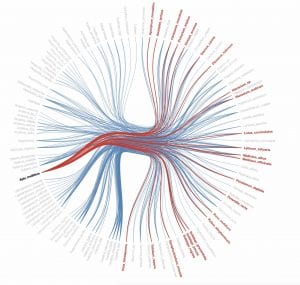
The American bumble bee (Bombus pensylvanicus), a species in decline in North America and listed as “vulnerable” on the IUCN Red List.
Wild and managed bees are experiencing unprecedented range contractions and loss rates. For example, 13% of New York’s wild bees are known to be experiencing population declines and ~40-50% of the state’s honey bee colonies are lost each year. These numbers are representative of broader trends throughout much of the world. At the same time, pollination services are estimated to contribute approximately $15 billion and $500 million annually to the U.S. and N.Y. economies, respectively. Thus, pollinator declines are troubling from an economic as well as conservation standpoint. Why are bees declining and what can we do about it? What can we learn from fundamental ecological studies, and can this knowledge inform conservation and management decisions? These are core research motivations in the McArt lab. We use tools from chemical, molecular and community ecology to assess how pesticides, pathogens, and habitat impact pollinator health and the delivery of pollination services.
Current Research
1) Understanding pesticide exposure and risk to bees in multiple land management contexts.
2) Combining empirical data with network modeling to understand pathogen transmission in complex plant-pollinator networks.
3) Understanding how habitat enhancements (e.g., flowers at solar power sites) impact pollinator populations and the services they provide to agriculture.


